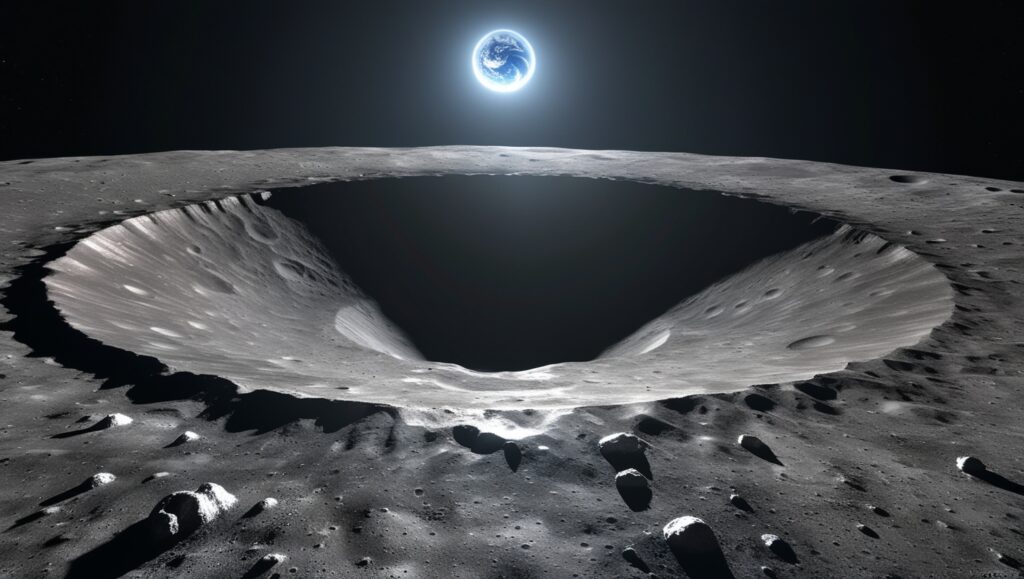Chandrayaan-3: Pragyan Rover Discovers Ancient 160 Km Wide Crater on the Moon

Crater on the Moon
India’s Chandrayaan-3 mission has made a significant breakthrough in lunar exploration by discovering a 160-kilometer-wide crater located near its landing site. This discovery, which was announced recently, highlights the ongoing contributions of the Pragyan rover to our understanding of the Moon’s geological history.
Overview of the Discovery
The Pragyan rover, which landed on the Moon’s surface in August 2023, has been actively sending back data and images that have led to this remarkable finding. The crater was identified from data collected as the rover traversed highland terrain approximately 350 kilometers from the South Pole-Aitken Basin, the largest and oldest impact basin on the Moon’s surface. This ancient crater is believed to have formed even before the Aitken basin itself, making it one of the Moon’s oldest geological structures.
Geological Significance
The newly discovered crater is particularly valuable for scientific research due to its age and composition. It is thought to have been largely buried by debris from subsequent impacts, especially those associated with the South Pole-Aitken event. Over time, this has led to significant degradation of its structure. The materials found within this crater are crucial for understanding the early geological evolution of the Moon, as they contain remnants from some of the earliest impacts that shaped its surface.
Key Features of the Crater:
- Diameter: 160 kilometers
- Location: Approximately 350 kilometers from the South Pole-Aitken Basin
- Formation: Believed to predate the South Pole-Aitken Basin
- Composition: Rich in dust and rock accumulated from past impacts
Imaging and Analysis
The Pragyan rover utilized its high-resolution optical cameras to capture detailed images of the crater’s structure. These images provide vital clues about the geological processes that have occurred on the Moon over billions of years. The data has been published in a recent issue of Science Direct by scientists from Ahmedabad’s Physical Research Laboratory, further validating its scientific importance.
Implications for Future Research
The discovery of this ancient crater opens up new avenues for lunar research. Scientists are excited about the potential insights it could provide regarding not only the geological history of the Moon but also broader planetary formation processes in our solar system. The materials collected from this site could help reconstruct a timeline of lunar impacts and contribute to our understanding of how celestial bodies evolve over time.
Conclusion
Chandrayaan-3 continues to be a pivotal mission for lunar science, with its discoveries reshaping our understanding of the Moon’s history. The identification of this ancient crater by the Pragyan rover underscores India’s growing capabilities in space exploration and sets a foundation for future missions aimed at unraveling more secrets of our celestial neighbor. As researchers analyze more data from this mission, we can anticipate further revelations about not just lunar geology but also planetary science as a whole.






